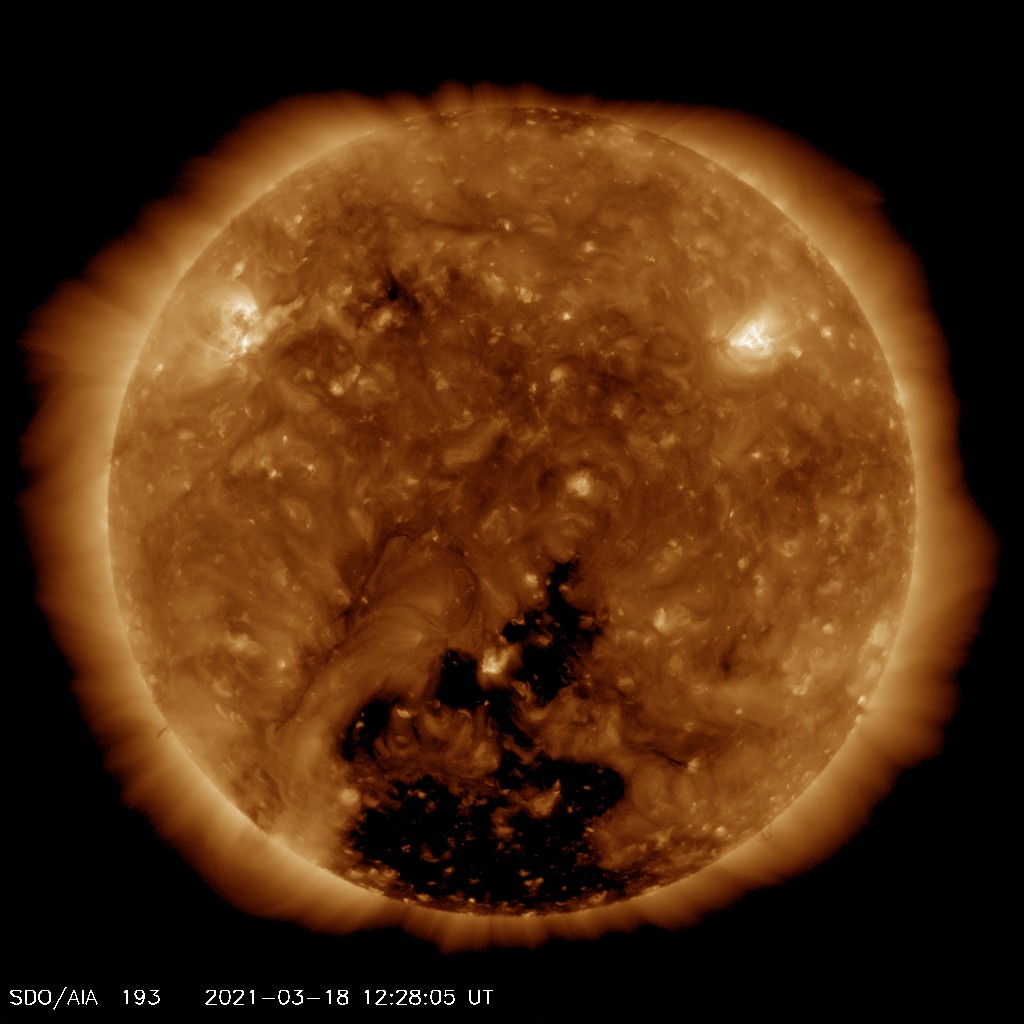Space Weather Alert - 18th March 2021
What Has Happened?
A large northern extension of the southern polar coronal hole reached an Earth facing position on the 17th of March 2021. The high solar wind speed stream associated with this coronal hole is anticipated to arrive late on the 19th March and is expected to cause enhanced geomagnetic activity (see Categories of Geomagnetic Activity for more details about these storm levels).
On the previous solar rotation, this coronal hole caused activity to peak at STORM G1 on the 21st February. Geomagnetic storms are statistically more likely around the equinoxes, including March, with negative coronal holes becoming more geo-effective during the spring. Hence, the arrival of this high speed stream is expected to cause activity to reach storm levels to a possible maximum of STORM G2 late on the 19th or early 20th, due to the effects of a Co-rotating Interactive Region (CIR), and as we are close to the spring equinox. As the coronal hole is large in size, the high speed stream is likely to remain geo-effective for a couple of days, with further chances of STORM G1 periods possible.
The timing of coronal hole high-speed solar wind arrival can be often uncertain, but assuming clear, dark skies, there is a greater chance of seeing the aurora late on the evening of the 19th and into the 20th March. Those in Scotland, northern England and Northern Ireland have the better chance if the weather is favourable.
Sign-up to receive Geomagnetic Disturbance Alert emails.
Follow us on Twitter:
Follow @BGSauroraAlert for more occasional aurora alerts.
Follow @BGSspaceWeather for daily space weather forecasts.
Glossary
- BGS
- The British Geological Survey is one of the Natural Environment Research Council's Research Centres.
- Coronal Hole
- A region in the Sun’s outer atmosphere (corona) where hot material can flow unrestrained by its magnetic fields out into space.
- CIR or Co-rotating Interactive Region
- A compression region ahead of a coronal hole high-speed stream (CH HSS). They form due to the interaction of slower, ambient solar wind ahead of the higher-speed stream. They usually result in particle density enhancement and interplanetary magnetic field strength increases and can cause geomagnetic storms when reaching Earth.
- High Speed Stream
- A fast moving stream of solar wind, responsible for magnetic storms.
- Solar Wind
- The ever-present expansion of the Sun’s hot outer atmosphere into the solar system, which carries space weather within it.


